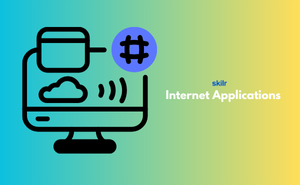👇 CELEBRATE CLOUD COMPUTING DAY 👇
00
HOURS
00
MINUTES
00
SECONDS

The Certificate in Internet Applications program provides comprehensive training in the development and implementation of internet-based applications. The program covers topics such as web development, mobile app development, cloud computing, and cybersecurity. Participants will learn how to design and deploy internet applications to meet the needs of modern businesses and consumers.
Why is Internet Applications important?
Who should take the Internet Applications Exam?
Candidates taking the certification exam on the Internet Applications is evaluated for the following skills:
Internet Applications Certification Course Outline
Web Development
Mobile App Development
Cloud Computing
Cybersecurity
User Interface (UI) and User Experience (UX) Design
Database Management and Integration
Credentials that reinforce your career growth and employability.
Start learning immediately with digital materials, no delays.
Practice until you're fully confident, at no additional charge.
Study anytime, anywhere, on laptop, tablet, or smartphone.
Courses and practice exams developed by qualified professionals.
Support available round the clock whenever you need help.
Easy-to-follow content with practice exams and assessments.
Join a global community of professionals advancing their skills.
(Based on 258 reviews)
The exam aims to validate a candidate’s proficiency in designing, developing, deploying, and maintaining internet-based applications, covering both front-end and back-end technologies.
While there are no formal prerequisites, candidates should have a foundational understanding of web technologies, programming logic, and database interactions.
Security is a key component, with questions focusing on HTTPS, authentication methods, data encryption, and mitigation of common web vulnerabilities.
Yes, the exam covers essential topics related to deploying web applications on platforms like AWS, Heroku, and Netlify.
While some versions of the exam may include a hands-on practical assignment or case study, most are theoretical with optional lab assessments depending on the institution.
Yes, the exam is beginner-friendly but assumes that candidates have completed foundational training or coursework in web development concepts.
Yes, the exam includes conceptual and basic implementation questions on popular frameworks such as React and Angular, though in limited depth.
The exam duration is generally 90 to 120 minutes, and candidates need a minimum score of 70% to pass.
The exam covers HTML, CSS, JavaScript for front-end development, and commonly used back-end languages such as PHP, Python, and Node.js.
The exam typically includes multiple-choice questions, code interpretation problems, debugging scenarios, and application design case studies.